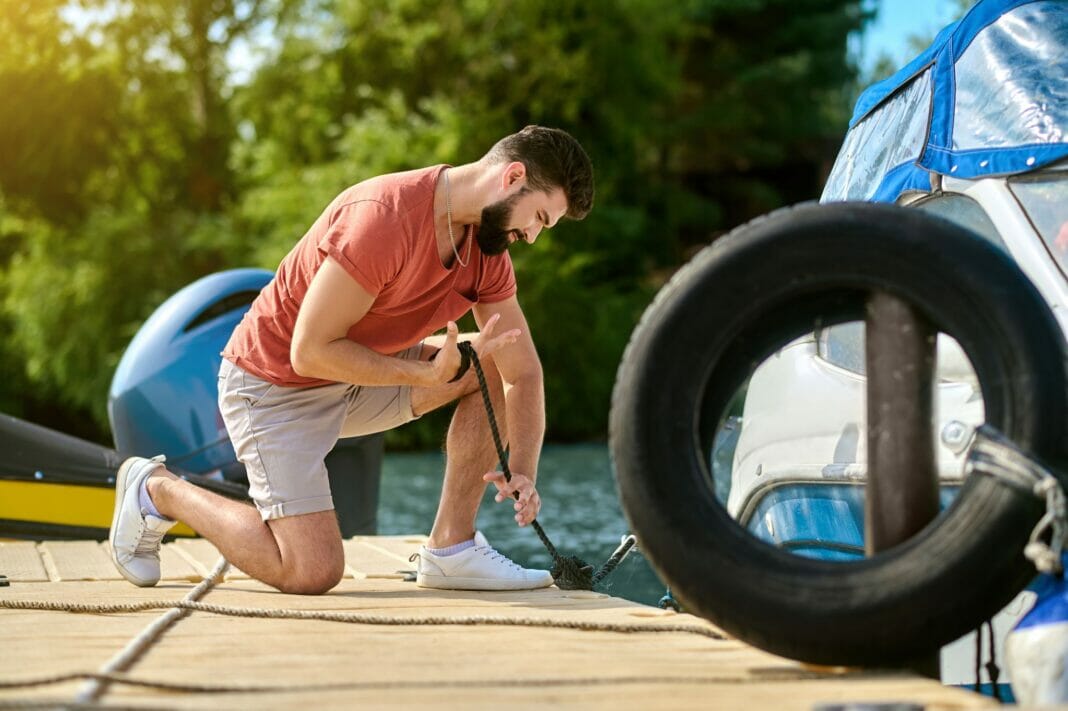Docking your boat is an essential skill that every boater needs to master. Whether you’re a seasoned sailor or a beginner, understanding how to safely and smoothly dock your vessel is crucial for maintaining the integrity of your boat, as well as ensuring the safety of those around you. In this article, we will explore broadside docking, providing you with valuable tips and tricks to make your maneuver as effortless as possible.
What is Broadside Docking?
Broadside docking refers to the process of positioning and securing your boat at a right-angle to the dock or pontoon. This docking method is commonly employed when space is limited, as it maximizes the available room for other vessels. Additionally, broadside docking can provide shelter from wind and current, making it easier for the crew to embark and disembark.
Assessing the Conditions
Before approaching the dock, there are several factors that need to be assessed to ensure a safe and smooth docking process. These include:
Wind & Current
Consider the direction and strength of the wind and current to determine how they may impact your approach. A headwind or current can assist in slowing your boat down, while a tailwind or current may require additional power and control to maintain the necessary speed.
Docking Space
Evaluate the available docking space, making sure it is wide enough to accommodate your boat’s beam. Be aware not just of the width of the space, but also its depth, as your boat needs ample space behind it to avoid colliding with the vessel docked opposite.
Dock Configuration
Take note of any obstacles, such as cleats, pilings, or other vessels, that may be in your way when maneuvering your boat. A solid understanding of your boat’s turning radius will help facilitate a trouble-free approach.
Approaching the Dock
With an understanding of the conditions, it’s time to begin your approach. Keep these tips in mind:
Position Your Bow Into the Wind or Current
By positioning your bow into the prevailing wind or current, you will have greater control during the docking process, as these forces will help keep your boat stable.
Approach at a Safe Speed
Determine a safe speed for your approach, accounting for the wind and current conditions. A good rule of thumb is to approach at a slow walking pace.
Adjust for Drift
As you near the dock, be prepared to counter any drift that may be caused by wind or current. Adjust your throttle and steering as needed to maintain a steady approach.
Executing the Maneuver
With a successful approach underway, it’s time to execute the broadside docking maneuver:
Align the Boat Parallel to the Dock
As you reach the dock, gradually turn your boat perpendicular to the dock, bringing the boat parallel to and alongside the dock. At this point, your boat should be positioned with a one to two-foot gap between you and the dock.
Fend Off
Before the boat comes into contact with the dock, deploy fenders to protect your hull from any damage. Be sure to have enough fenders onboard and set them at the right height to account for your boat’s freeboard.
Secure the Boat
Once your boat is in position and fenders are in place, secure your vessel to the dock using well-prepared mooring lines. Begin with a bow and stern line, followed by spring lines to maintain optimal positioning.
Tips for a Smooth Broadside Docking Experience
Here are some additional tips to ensure your broadside docking experience is smooth and trouble-free:
- Practice: As with any skill, practice makes perfect. Take the time to practice broadside docking in various conditions and at different docking points to hone your skill and confidence.
- Communication: Ensure clear and efficient communication between the helm and the crew. This will help everyone work together seamlessly, making docking a smooth and streamlined process.
- Prepare in Advance: Have your fenders, lines, and other docking equipment ready before approaching the dock. This will save valuable time and help prevent any inadvertent collisions.
- Adjust for Dock Height: Be mindful of dock height relative to your boat’s freeboard, ensuring that fenders and lines are set up correctly to account for any differences.
By following these tips and paying close attention to the conditions, broadside docking can be both safe and straightforward. Take the time to practice and perfect your docking skills, and you will soon be maneuvering your vessel with ease and confidence.


